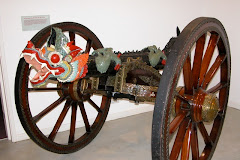One of the first actions taken by the attacking commander at a siege would be to call upon the fortress to surrender. If it did so, this usually meant a guarantee that there would be no reprisals, whereas if the fortress forced the besieging army to go through all the process of a siege, it often led to brutal scenes in the immediate aftermath of the fall.
Many fortified town and castles were besieged on more than one occasion. Lessons learned in one siege were often recorded and used next time around, sometimes decades later, more often by the attacker than the defender. During the Peninsular War, Badajoz, on the Spanish/Portuguese border, was besieged twice by the Allied force under Wellington: it was successful on the second attempt, but led to a savage attack by rioting soldiers on the unfortunate inhabitants.
The Siege of San Sebastian on the north coast of Spain was begun and then lifted in order to deal with a more pressing problem, but it was successful at the second attempt, despite the fact that the fortress was being supplied by sea. Here, too, was another unusual feature in that the battering guns were much further than usual from the citadel due to the intervening stretch of water that almost surrounded it. This demanded very high standards of accuracy from the guns.
Evidence of the standards achievable can be seen in one particularly unusual event during the Siege of San Sebastian - probably the first recorded instance of artillery firing in support over the heads of attacking troops. On this occasion the commander of the Right Attack saw that, having breached the outer walls, the attack was failing because the defenders had built a second wall facing the breach and were using it as protection from which to shoot troops scrambling over the rubble. He directed his guns at the French riflemen on top of this defensive wall and did so to such effect that their fire was neutralized. When the wall was passed, the attackers found a large number of headless bodies! This fire was at a range of over 600 metres.
It appears that much of this accuracy was due to the use of clinometers to lay the guns - possibly one clinometer taken down the line of guns by an officer, with each gun firing in turn rather than firing salvoes. This would also reduce the effect of smoke from one gun 'blinding' the layers on guns downwind and make it easier for an observer with a telescope to correct fire, since he could see individual 'strikes'. We know that the commander of the Right Attack kept a log of the action while observing during this siege.
Subscribe to:
Post Comments (Atom)




No comments:
Post a Comment